The Argument For Saving The 1938-1942 Willys Coupes
A hot-rodder's staple for decades, are original Willys coupes almost extinct?
01/29/2024

A hot-rodder's staple for decades, are original Willys coupes almost extinct?

Recently I was perusing old car classified ads online, thinking of possibly buying a Ford Model A, when I suddenly realized that on some websites hot rod Model A’s outnumbered stock examples to a depressingly large degree. It occurred to me that at the rate hot-rodders are mutilating Model A’s, there may come a time when bone-stock examples become extinct. While I realize there are still thousands of unmodified A’s out there, the possibility does exist that it might happen at some point in the future. That thought makes me sad.
It made me think of another car that faces the same bleak future: the 1938-’42 Willys, especially the coupes. Unfortunately, these vehicles have already been hot-rodded to near extinction, and I fear that the day when they no longer exist in stock form is getting depressingly closer. It could happen in my lifetime and believe me, I’m no teenager. On one dealer website there were ten Willys cars for sale; nine of them were hot rods.
Sadly, today there are likely to be generations of kids who think every Willys automobile came equipped with another manufacturer’s small-block V-8 and a blower intake sticking out of the hood. They likely have no idea of the original purpose of the cars. So, I thought I’d show everyone a photo of a 1940 Willys coupe as it came from the factory, depicting what it looked like. Show it to your kids and grandkids and maybe they will appreciate how pure the styling was in its original form. After all, they may never get to see a stock example.
I realize that some readers–perhaps a great many–will object to my use of the term ‘mutilating Model A’s.’ I understand that for some enthusiasts a hot rod is more desirable than an original vehicle. In the 25 years since I purchased my 1967 Rambler convertible, I’ve had several people suggest I stuff a small-block in it, to replace the trusty original AMC 232-cu.in. six-cylinder engine. I never will, even if someone gives me an engine for free and offers to install it as well. For one thing, I don’t want another manufacture’s engine under the hood of my Rambler; for another, the 232 six has more than enough power for me. Back in my youth, I spent too many hours sitting in holding cells at the various police stations waiting for my parents to bail me out. I lost my driver’s license twice and was arrested at gunpoint once; my days of fast driving are done.
To get to the heart of the matter, I just believe hot-rodders are altering too many old cars. We need to preserve our industrial history and a lot of that involves cars. Especially independent brands, which are rare enough to begin with. What also disturbs me is that hot-rodders are so desperate to own a Willys they are now hot-rodding Aero Willys cars, Jeepsters, and station wagons. One enthusiast even modified an FC pickup. Prices of nice, original Willys coupes can run over $100,000, and I believe that’s because people like to buy mint originals and then rod them. The old story of, “Rodders are saving old Willys cars that otherwise wouldn’t ever be restored,” doesn’t hold water to me; they look for the nicest original car they can find and then chop it.
The 1938-’42 Willys cars were alternative vehicles. In an era when foreign cars were almost never seen in the U.S., the Willys were smaller and lighter than conventional American cars (hence their popularity with hot-rodders and drag racers) motivated by modest four-cylinder engines that provided adequate power and superior fuel economy. The Willys cars were less expensive and more economical than other U.S. cars. Being smaller and less powerful, they appealed to the type of buyer who could appreciate those qualities. And often those people had to put up with smart-aleck remarks from neighbors and kids who considered Willys owners cheapskates and weirdos. It took a special person to own a Willys.
All of that is lost on people today because all they see is a loud, aggressive-looking funny-car that snarls and spews exhaust. The whole meaning of the car is destroyed. So, if you simply must have a Willys, buy one of the replica kits that are available. Save the remaining original cars for posterity.
The classic VW Beetle is probably the single most iconic car ever made. Regardless of where you go, you will see a VW Beetle somewhere on the road. While the uninitiated may think they are uncomfortable and twitchy, the truth is that the interior of a Bug is kind of like Dr. Who's Tardis: it is a lot bigger on the inside that it looks. That doesn’t mean every Beetle you hop into is comfortable - the seats are very simple in design, using a smattering of steel springs and horsehair padding.
Our 1973 standard Beetle had the original seats with the original covers, which were in surprisingly good shape considering they are 50 years old. In fact, this car was built in May 1973. The seats were serviceable for a casual driver, but you could feel the springs moving in your back and posterior. The driver side cover was decent but the passenger side lower had developed some cracks, so their days were numbered. The Bug already had a big bore 1834-cc with twin carbs and custom cam, along with a Freeway Flyer trans and the car had been lowered 1.5 inches, so the interior needed some resto-modding to match. We picked up the phone and called TMI Products to see what they had to offer, and much to our surprise, the answer was quite a bit.
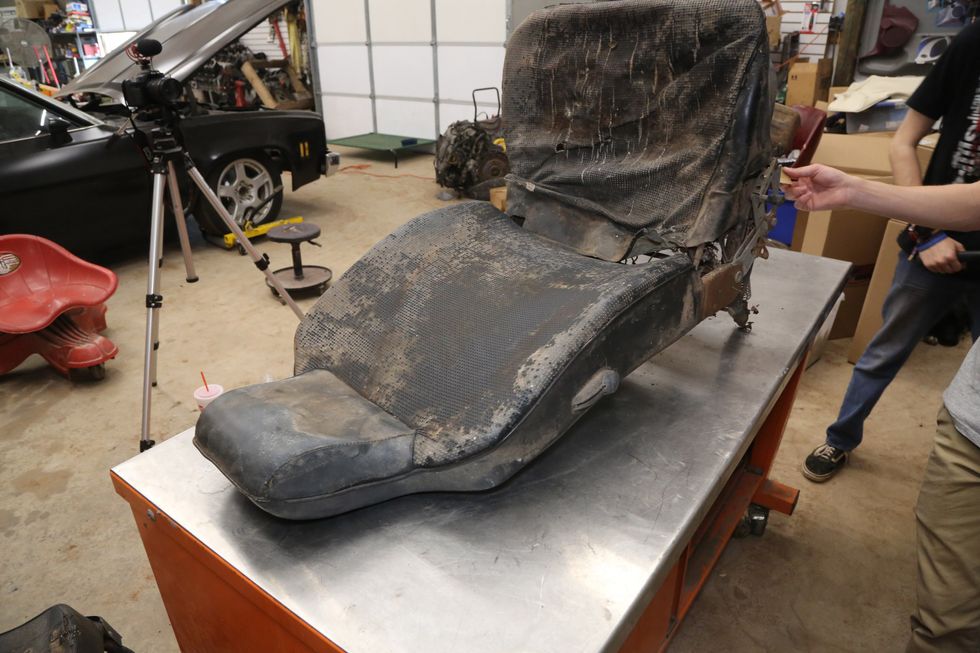
We expected a few stock patterns, and maybe a couple of ready-made custom layouts. Instead, we had a world of colors and patterns to choose from. This really opened the door to fantasy land, and in the end, we settled on a really beautiful turquoise houndstooth center fabric with a cream vinyl outer. This design was carried throughout the interior- front seats, rears, and door panels. This isn’t something TMI did special for us; this is how they operate, and it elevated the interior from stock to striking. Along with the covers, we also ordered a set of new seat foams, which allow you to ditch the stiff uncomfortable horsehair pads.
Once we had the covers off, we saw that these seats had been “customized” at some point with some cardboard over the springs to stiffen the seats. The original padding was quite stiff and had no give left. We removed all of it in favor of the new foams from TMI, which add much needed compliance to the cushions. There are a couple unique aspects of the VW seats. Instead of hog rings, the buckets use sharp metal tabs to pierce the upholstery. Because of this, you need some listing wire. The new covers do not come with this, but the original wire should be reusable if it is not badly rusted. If it is too far gone or missing, a little strip of bailing wire is a suitable replacement. The covers also use a drawstring on the bottom cushion to pull it tight. This is tied to either side of the frame.

We ran into a big problem on our seats when we took them apart, however. This being our first VW Bug, we were not aware that VW seats changed quite a bit and that they are often swapped around. We ordered covers for our '74 Beetle, and when we were ready to install the seat back covers, the new foams didn’t make any sense of how they fit. We called TMI tech support and sent some pics. Turns out we had 1973 seats; in fact, the car was a '73, but titled as a '74. The DMV must have made a typo, as the VIN matches. '73 Volkswagen seat backs are a one-year only, and we had covers for 1974-'76 seats. Luckily, we were able to find a set of '74 seat backs, which will swap over to the '73 lower frame, so crisis averted. Let this be a warning to you: before you order seat covers for a Beetle, check to make sure you have the right year. It was not something we thought to do, and was a clerical error on the vehicle’s title - even the guy we bought the car from told us it was a '74, so understand that you don’t know what you don’t know sometimes.
Installing the covers was a simple process. Each one takes about 20-30 minutes per section (back and lower), and we had both seats done in about 2-3 hours, all told. The finished seats shown here are without the plastic trim that they should have. One side on each of our seats had broken plastic trim, which we need to replace. That will be done later when we replace the dash and all the interior plastic trim parts at once. The new seats are much more comfortable and they look incredible inside the VW. They look great, and our backs and backsides appreciate the change.
Photo: Jefferson Bryant
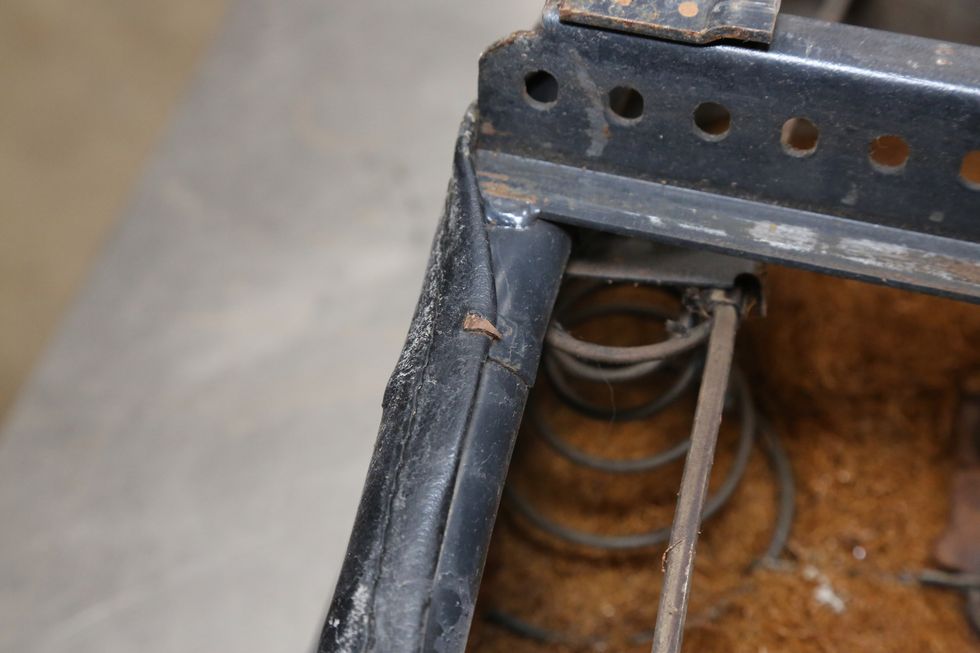

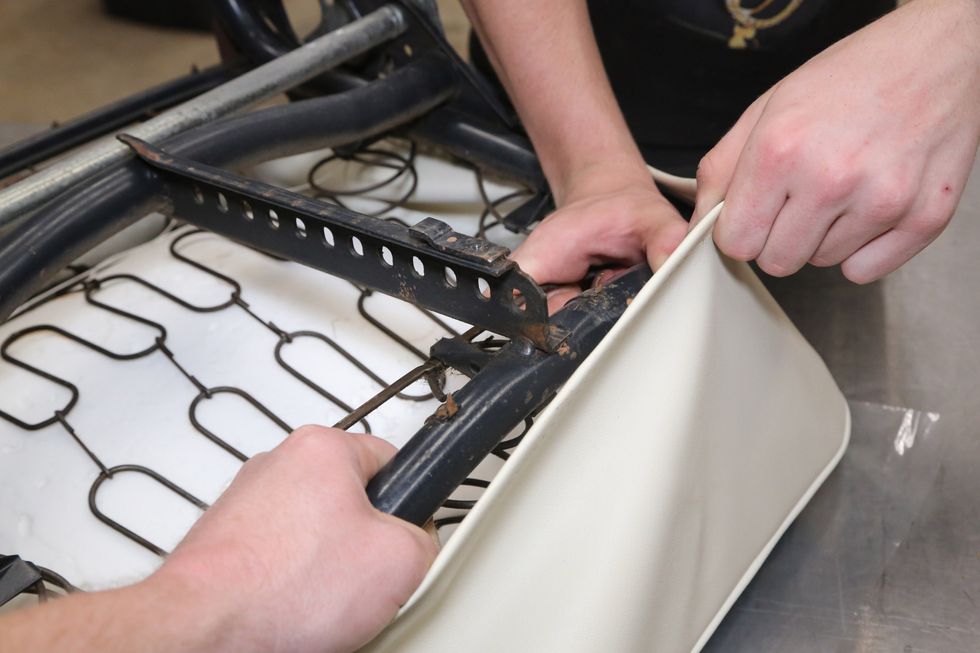



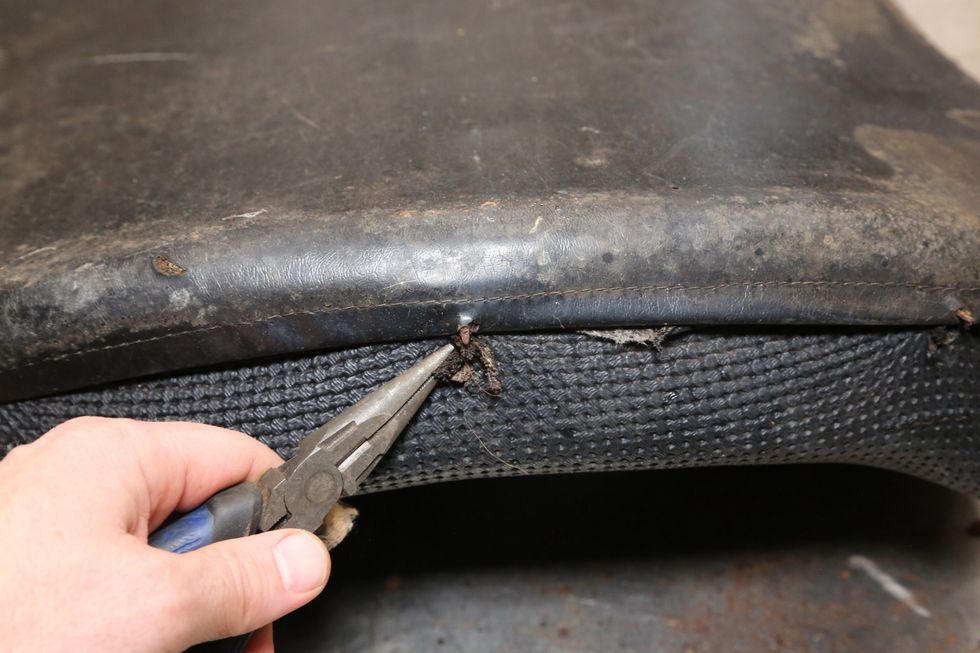
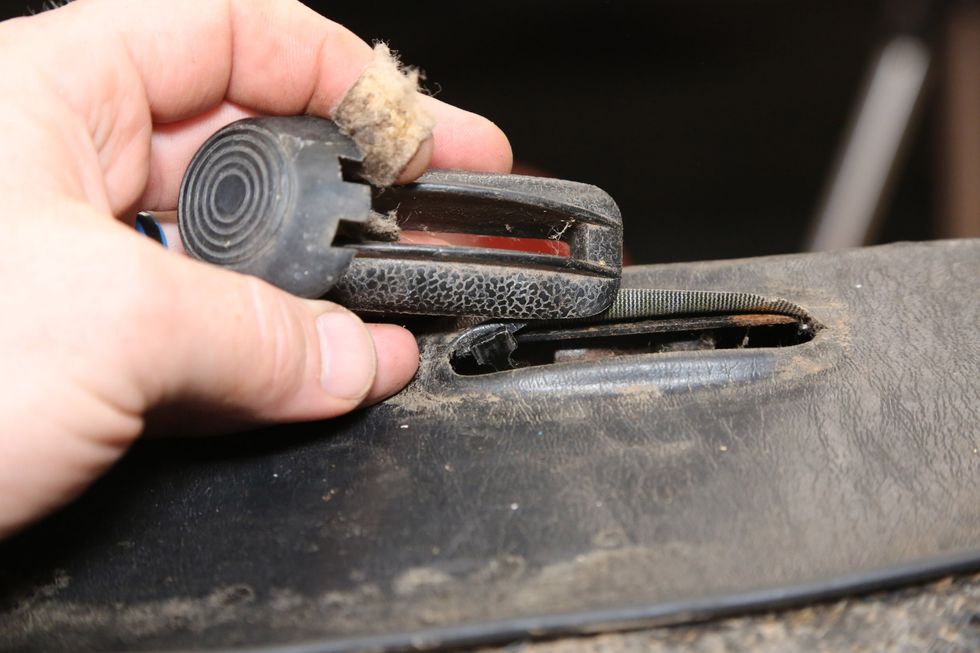



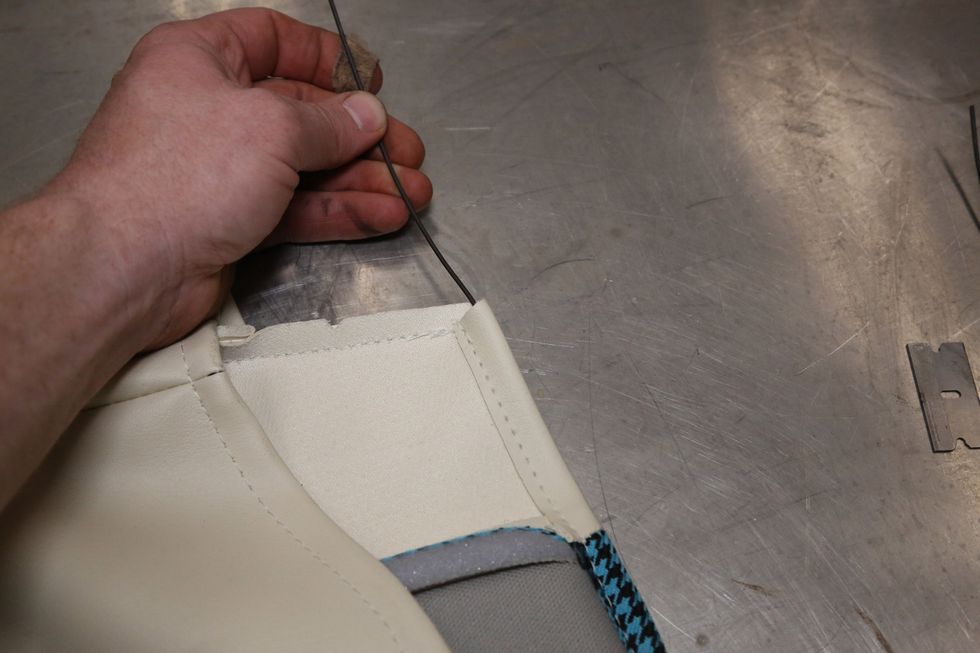


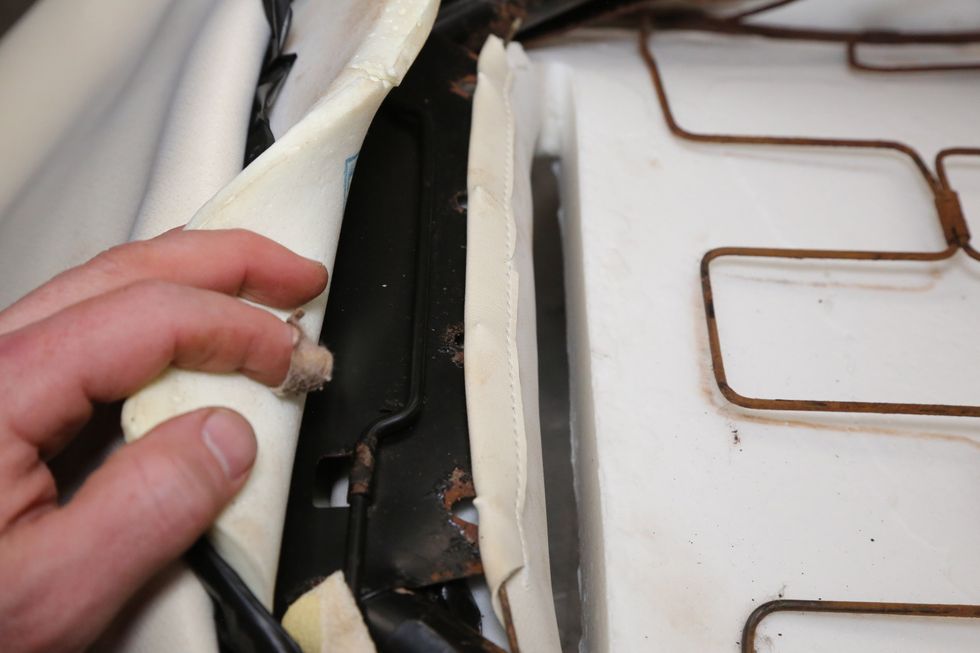
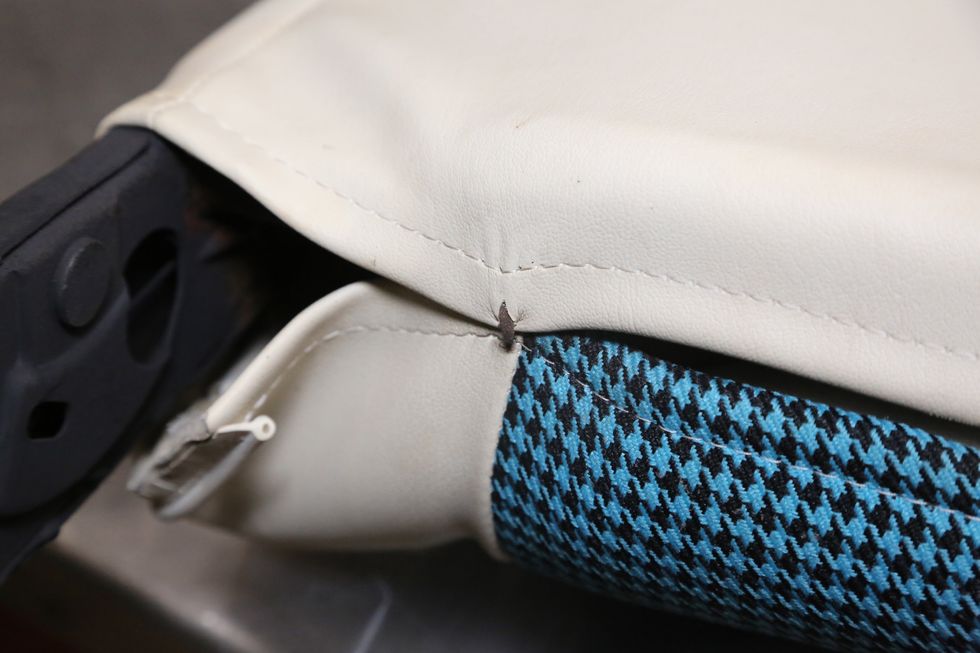


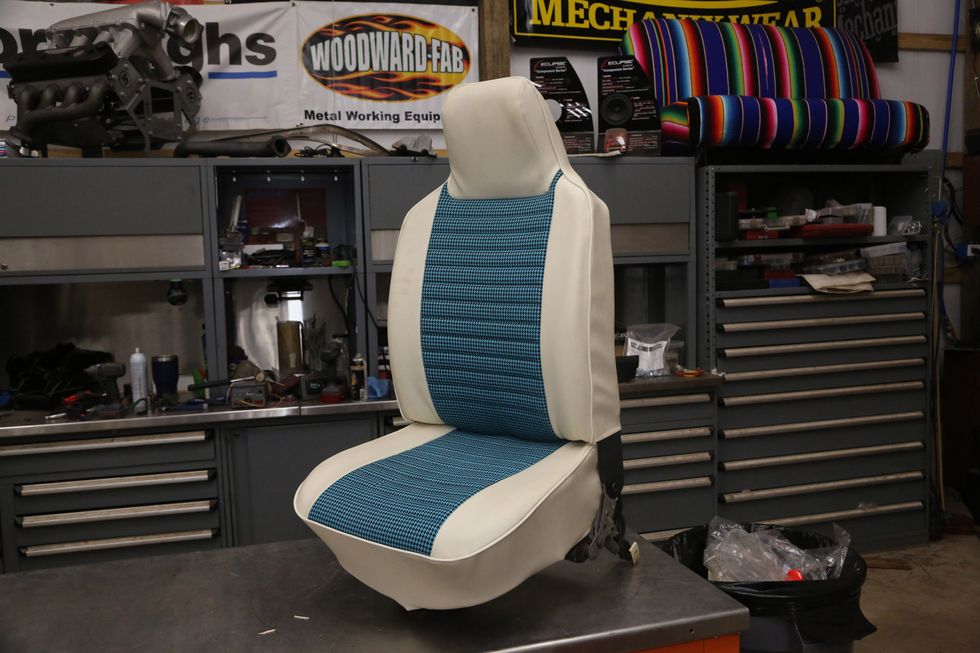
TMI Products •(888) 460-0640 • tmiproducts.com
“Gee, another iron small-block Chevy block? That’s hardly news.”
If you are an aggressively jaded LS engine enthusiast, this is probably not ground-breaking or exciting information. But despite inroads by the LS family, the small-block Chevy lovers of the world are not yet ready to give up on their venerated engine. It’s no secret that despite the bajillion small-blocks that Chevrolet produced over the decades that suitable cores for the popular small-block are disappearing at a prodigious rate. Of those survivors, optimal candidates for a performance build are becoming harder to find. Try to locate an affordable standard bore, 2-bolt 400 block today. If you do, the owner will want serious coin for a crusty casting.
But now there’s another alternative. Summit Racing recognized this shortfall and along with the BluePrint engine people stepped up for brand new tooling for a series of iron blocks. Just as importantly, the quality of the casting and machine work is impressive. The partners sought out a reputable casting facility in Germany to do the heavy lifting while the CNC machine work is finished here in the USA. So yes, the blocks originate from overseas, but these castings cross the Atlantic, not the Pacific.

Enough generalities. For small-block connoisseurs, the allure is in the details. Summit labels this new block the Street, Performance, Competition (SPC). The blocks are offered with a choice of two bore diameters of 4.00- or 4.120-inches. Plus you have the option of either a traditional two-piece rear main seal or the later one-piece version. Finally, the larger bore blocks are available in either the 350 main journal diameter or the larger 400ci version. Summit is considering also offering finished honed blocks as another option.
But this new SPC piece is not merely a duplicate of an earlier factory block. Right off, all blocks are cast using a stronger Class 35 iron alloy and employ nodular iron main caps. Like their production cousins, the center three main caps are attached with four bolts with 7/16-inch inners and smaller 3/8-inch versions for the splayed outer bolts that Summit’s Brian Nutter tells us the outer bolts are there mainly to limit lateral cap movement but also add additional bulkhead strength.
A critical point is that this block has been upgraded to priority main oiling. Production small-blocks lube the mains and rods only after first feeding the lifters. The addition of a dedicated main oil galley pushes oil directly to the mains to ensure the lower end is properly lubricated.
The deck height on these new blocks is shorter at 9.00 inches mainly because most aftermarket pistons are designed around this deck height. To improve head gasket sealing, the deck thickness is an impressive 0.600-inch and all the cylinder head bolt holes are blind. This means the head bolt holes do not intrude into the water jacket.

Speaking of coolant flow through the block, the block designers invested significant effort into improving coolant flow. The cylinder walls are siamesed which means the cylinder walls connect at the midpoint while increasing the volume around the tops of the cylinders by pulling the lifter valley walls inboard. This can be easily spotted by the pushrod clearance radius cuts made into the lifter valley walls. There are also pipe threads cut into the all main lubrication galleys to accommodate ¼-inch NPT plugs.
The cylinder walls are also strengthened. The blocks can accommodate up to a 4.185-inch bore diameter and still maintain a minimum wall thickness of 0.220-inch especially around the thrust surfaces. The as-delivered bore size for the 4.00-inch bore versions is actually 3.995-inch while the larger bores are at 4.120-inch to allow for honing to the standard diameters for piston clearance.
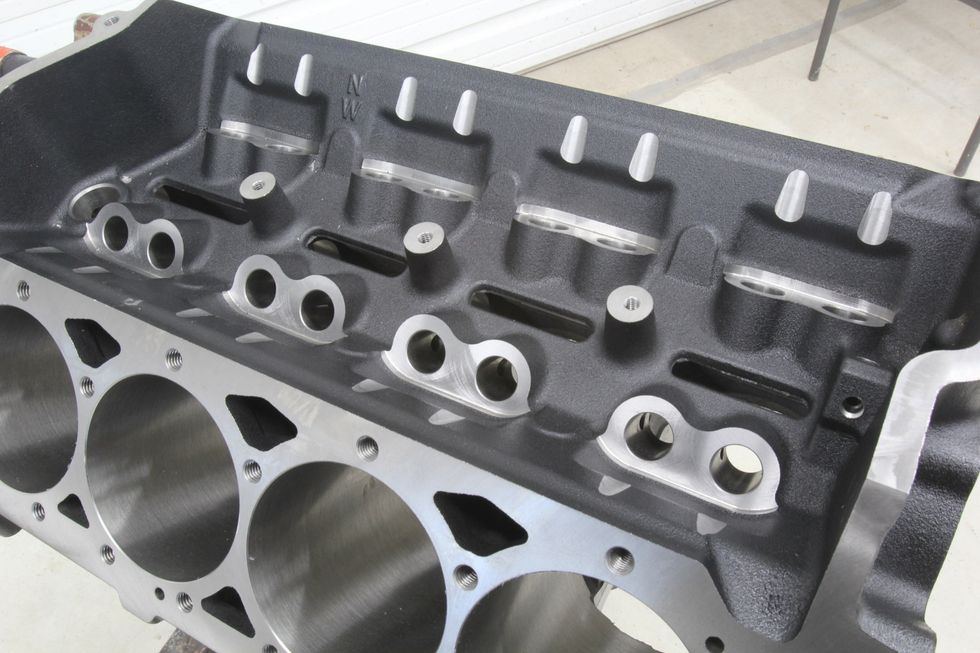
Another welcome addition is that all the blocks are fitted with provisions for a factory style hydraulic roller camshaft. Three pedestals are cast and threaded to attach the factory spider and the lifter bores are taller for use with factory hydraulic roller lifters. The camshaft height is also in the stock location so it will accept a standard single or double-roller small-bock cam drive.
These taller lifter bores do require a 0.300-inch taller roller lifter when using a mechanical or hydraulic roller, link-bar lifter and Summit notes that using these taller lifters means the heads must be removed to remove the lifters from the bores, much like an LS engine. This means that changing camshafts with taller lifters will demand removing the heads. Of course, this block can also be used with a flat tappet camshaft.

Summit’s Mike Schmidt tells us that these blocks are all machined on high-speed Makino CNC machines which not only leaves a very smooth, final surface but with computer numerical control the orientation of lifter bores to the cam centerline, among other positions, should be exceptionally accurate. Accurate valve timing would also contribute to making more power. It’s a subtle point, but this is the same approach used to build competition engines where accuracy is critical.
Another nice addition is this Summit block is machined for the factory hydraulic roller cam retention plate. If this plate is used this also demands a stepped nose style camshaft which eliminates the hassle of setting camshaft endplay clearance.

Moving to the bottom end, the block has been factory cast with reliefs in the area just above the oil pan rail to produce clearance (depending upon connecting rod design) for up to a 3.75-inch stroke. This area is cast solid so if additional clearance is needed, there are no coolant passages in this pan rail area to worry about.
To accommodate a wide variety of production block applications, the SPC block includes the stock mechanical fuel pump mount using a stock length pushrod along with the stock spin-on oil filter location. The stock three-bolt engine mounts are logically present along with three freeze plug provisions per side with two more front and rear. Keep in mind that this block will require two more brass freeze plugs compared to a standard small-block kit. In addition, you will need nine ¼-inch NPT Allen plug for all the oil galley and water jacket plugs along with a pair of 1/8-inch NPT plugs.

All these Summit blocks are machined for the later model, passenger side dip stick location which requires the same configuration oil pan. The engine is, of course, a wet sump design and is machined to accept the typical standard or high volume small-block or big-block Chevy oil pump.
The price of these blocks at the time of this writing is just north of $2,000, which might seem high to some. But considering that a machine shop will charge between $800 or more to clean, Magnaflux, deck the block to be parallel with the crank centerline, bore, torque plate hone, and align hone the mains. Add this to an initial used block cost of around $200 and you are halfway to the price of this brand new casting. Yes, you will still have to torque plate hone this new block but the quality of the machine work on the rest of block certainly adds significant value.

This new Summit SPC block may not be the first choice for the average basic engine rebuilder. But it does fill a need for the performance builder with aspirations of big horsepower numbers. Summit says this block is more than capable of reliably delivering 700+ horsepower and there are rumors of a 1,500-hp blown application that is putting the test to this new block.
There are other blocks out there that offer some or most of these same features but they do so with a much higher price. With all the excellent features, it is certainly worthy of consideration especially if your next project calls for a stroker crank and a roller cam. There are ways to maintain the budget and still built a quality engine. That notion just moved a little closer to reality with the Summit SPC block.




Summit tells us that by mid-summer, the company will be adding a big-block Chevrolet version of the SPC block, in the MK IV configuration. These blocks will be offered in 4.500 and 4.600-inch bore sizes with either two- or one-piece rear main seals. In addition, there will be a choice of a 9.800 or 10.200-inch deck heights. Like the small-block versions, these blocks will be cast in Germany and machined in the USA. A 4.600-inch bore with a 4.250-inch stroke on a standard-deck Rat motor would produce a 565ci Rat motor. At 1.25 horsepower per cubic inch, a normally aspirated, single four-barrel combination would produce just north of 700 horsepower.
All specs are in inches, unless otherwise noted.
Block material: Class 35 Iron Alloy
Block Weight: 181-194 lbs., depending upon bore size
Bore size: 3.996 or 4.120
Bore Spacing: 4.400
Maximum bore size: 4.185
Deck Height: 9.00” (+0.005 to -0.0003)
Deck thickness: 0.600
Cylinder head bolt holes: Blind
Main journal size: 350 style - 2.4485 / 400 style - 2.649
Main cap bolts: 7/16” Inner, 3/8” outer
Main cap material: Nodular iron
Clearance for 3.750-inch stroke: Yes
Cam location: Stock position
Min. cylinder wall thickness at 4.185”: 0.220”
Lifter bore size: 8.437 +/- 0.0003
Cam bearing bore size: 2.000 +/- 0.001
Lubrication system: Priority main
Machined for OEM hyd. roller lifters: Yes
Oil pan rails: Solid (no water jackets)
Starter motor bolt holes: Drilled and tapped for both straight and offset

When you invest this much into a very nice cylinder block, you want everyone to know where it comes from.
Photo: Jeff Smith
All parts in this list are sourced from Summit Racing.